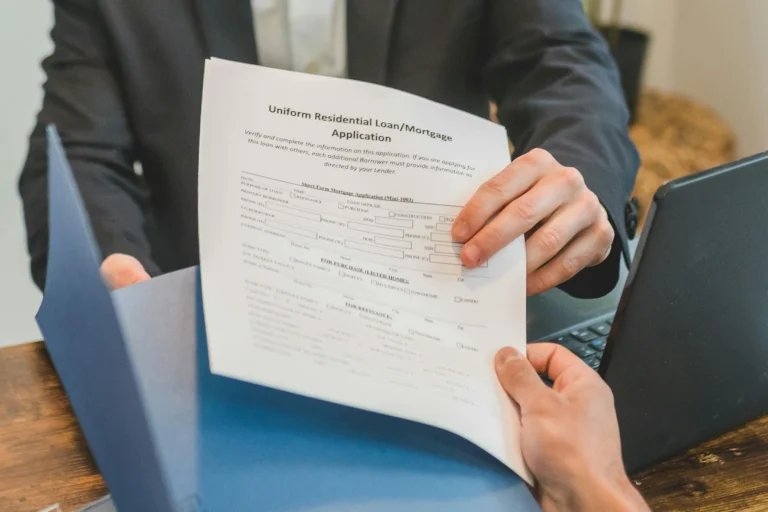Table of Contents
If you need a secure and reliable way to send money without using cash, personal checks, or digital transfers, a money order is a practical solution. It’s especially helpful for individuals who don’t have a bank account or prefer not to share their financial information. In this guide, we’ll walk you through everything you need to know about how to get a money order near me, including where to find one, how much it costs, how to fill it out properly, and important tips to keep your transaction safe.
What Is a Money Order?
A money order is a paper payment method that works similarly to a check but is prepaid and guaranteed by the issuer. It allows the sender to pay a specified amount upfront, which is then transferred to the recipient in a secure format. Since money orders are prepaid, they don’t bounce, making them a reliable option for both the sender and the receiver. They are commonly used for paying rent, bills, or sending money to someone without relying on a bank-to-bank transfer.
Learn More: How to Make Extra Income While Working Full-time
Where Can You Get a Money Order Near You?
There are several convenient places where you can obtain a money order near you. Let’s explore the most common locations:
U.S. Post Office (USPS)
The U.S. Postal Service offers domestic and international money orders. You can purchase them with cash or a debit card, and the maximum amount per order is typically $1,000. USPS charges a fee based on the amount of the money order, ranging from $2.35 to $3.40. USPS is federally backed and widely available, making it a secure and trusted option for sending money.
Find a USPS location near you.
Walmart
Walmart locations offer money orders through partners like MoneyGram, Western Union, and Ria. Walmart typically charges less than $1 per money order, which makes it an affordable option. You can use cash or debit cards to pay for the transaction. Most Walmart stores provide money orders at the customer service desk, making them easily accessible with long store hours.
Western Union
Western Union is a well-known money transfer company with locations in pharmacies, supermarkets, and corner stores. The fees for money orders at Western Union locations vary based on the location and transfer amount. You will need to fill out a form, pay the applicable fee, and receive a receipt. Western Union’s global brand and vast network of locations make it a reliable option for money orders.
Search Western Union locations.
MoneyGram
MoneyGram offers money orders through locations like CVS, Walmart, and other retail chains. The fees vary by location and the transfer amount, but generally, they are affordable. MoneyGram money orders are typically capped at $1,000 per order. You can pay with cash or debit at most locations, and MoneyGram is a trusted provider in the money transfer industry.
Banks and Credit Unions
If you have a bank account, you may be able to purchase a money order directly from your bank or credit union. Fees for money orders at banks typically range from $5 to $10, though some banks offer them for free to account holders. Banks are a secure option, especially for larger transactions, making them ideal for those who need guaranteed funds.
Convenience Stores & Pharmacies
Convenience stores and pharmacies like CVS, Walgreens, and 7-Eleven often provide money orders through partners like Western Union or MoneyGram. These locations are particularly useful for after-hours access and last-minute transactions. However, it’s a good idea to call ahead to confirm availability and fees, as they may vary by location.
Tip: Always call ahead to confirm availability and fees before heading out to purchase a money order.
Money Order Cost Comparison Table
To help you choose the best option for obtaining a money order, here’s a comparison of fees, maximum amounts, and other key details for the most common providers:
| Provider | Fee | Max Amount | Payment Methods | Tracking | Why Choose This Option? |
|---|---|---|---|---|---|
| U.S. Post Office (USPS) | $2.35 (up to $500), $3.40 (up to $1,000) | $1,000 per order | Cash or debit only | Yes | Secure, federally backed, widely available |
| Walmart | Usually $1 or less | $1,000 per order | Cash or debit card | Yes | Low fees, long store hours |
| Western Union | Varies by location and amount | $1,000 per order | Cash or debit card | Yes | Global brand with thousands of locations |
| MoneyGram | Varies by location and amount | $1,000 per order | Cash or debit card | Yes | Trusted provider, accessible in many retail locations |
| Banks & Credit Unions | $5–$10 (or free for account holders) | $1,000 or more | Bank account | Yes | Ideal for larger transactions, secure |
| Convenience Stores | Varies by location and provider | $1,000 per order | Cash or debit card | Yes | Convenient for after-hours access |
How Much Does a Money Order Cost?
The cost of a money order depends on where you purchase it and the amount you want to send. Typically, the fees range from $1 to $10, with some places offering them for free to account holders. For smaller amounts, locations like Walmart or CVS may charge less than $1. However, if you need a larger amount, banks or the USPS may charge between $3.40 and $10, depending on the provider and the specific location.
| Provider | Fee |
|---|---|
| U.S. Post Office (USPS) | $2.35 (up to $500), $3.40 (up to $1,000) |
| Walmart | Usually $1 or less |
| Western Union | Varies by location and amount |
| MoneyGram | Varies by location and amount |
| Banks & Credit Unions | $5–$10 (or free for account holders) |
| Convenience Stores | Varies by location and provider |
How to Fill Out a Money Order
Filling out a money order correctly is essential to ensure your payment goes through without issues. First, write the full name of the recipient on the line that says “Pay to the Order of.” This ensures the funds go to the correct person or organization. Next, include your own name and address in the section marked for the purchaser. This provides a record of who sent the payment.
If the money order is for a specific purpose like rent or a utility bill, you can write a note or account number in the memo or reference line. Finally, sign your name in the purchaser’s signature area. Once everything is filled out, keep the receipt for your records. It contains a tracking number that you’ll need if the money order is lost or needs to be canceled.
Final Thoughts
Money orders are a reliable and accessible method of sending payments when you want added security or when electronic methods are not an option. Whether you’re paying bills, sending money to family, or completing a purchase, a money order offers peace of mind through its guaranteed funds and traceable records. With so many locations offering money orders, finding one near you is usually quick and easy. By understanding how they work, where to buy them, and how to use them correctly, you can manage your money with confidence and security.








